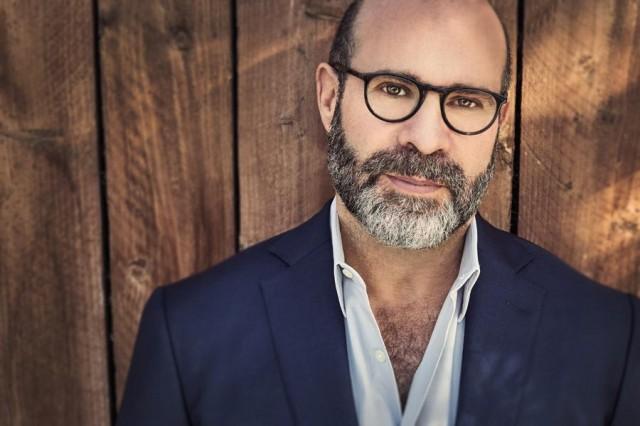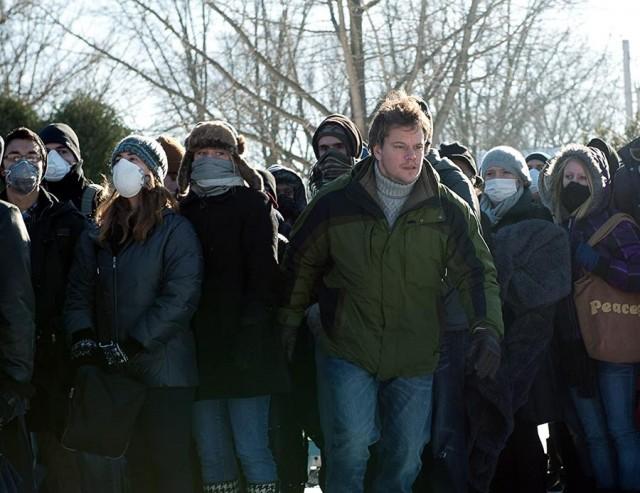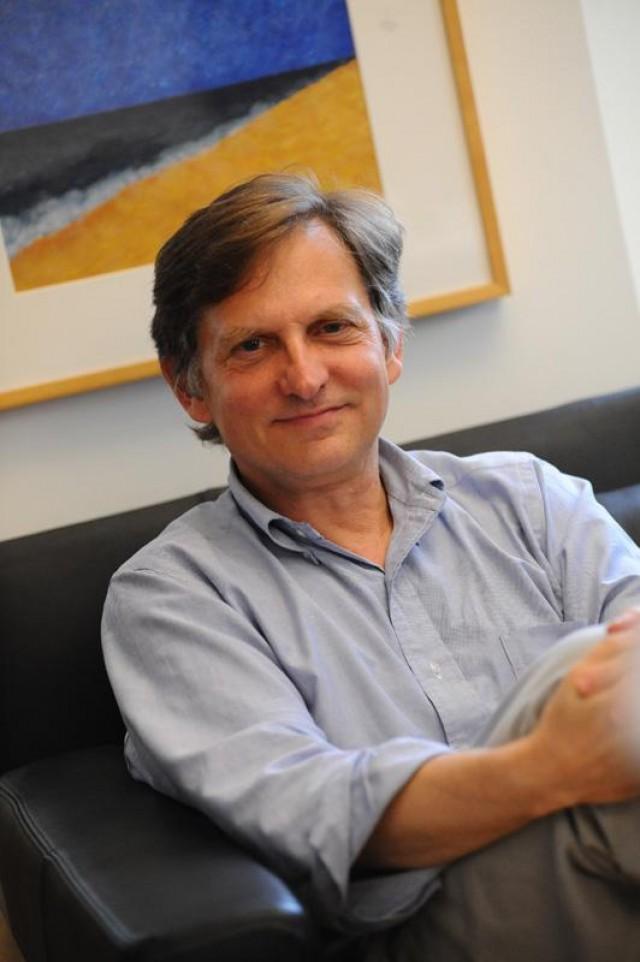‘Contagion’ screenwriter and consultant talk of pandemic, what they learned, and what they expect
Los Angeles — If there’s one movie that seemed to have been able to predict the world in 2020 with the pandemic starting in Wuhan, China and the spread of the vicious COVID-19, it's the Steven Soderbergh-helmed film of 2011, “Contagion.”
The thriller, starring Matt Damon, Marion Cotillard, Jude Law, Gwyneth Paltrow, Laurence Fishburne and Kate Winslet, showed how the world panicked as doctors race to find a cure for the rapidly spreading virus that has killed thousands.
“Contagion” scriptwriter Scott Z. Burns, who consulted with representatives of the World Health Organization and medical experts like Dr. Ian Lipkin who is the John Snow Professor of Epidemiology at the Mailman School of Public Health of Columbia University and the Director of the Center for Infection and Immunity, talked to us recently via video conferencing. Dr. Lipkin also recovered from COVID-19.
Below are excerpts of our conversations with them:
Scott Burns

Thank you for writing the open letter “A Bug’s Life”. Can you talk about the absurdity of today’s life that actually motivated you to write that open letter?
One of the questions that I have been asked quite a bit since the appearance of this virus, is why is the movie so prescient? Why is it so accurate? It's has come in the form of questions from legitimate journalists and from people who have been assaulting me on social media as somehow knowing this was going to happen.
And the response is very simple. When I pitched the movie to Steven Soderbergh, I said I only want to do this if it can be accurate and fact-based, because I had some awareness that we are in an age of pandemics.
And so I was able to get in touch with Ian, who is the best virologist we have in our country. And he said the same thing to me, which is, I will only help you on the movie if it’s very, very fact-based and science-based and it isn’t some sort of conspiratorial bullshit about a virus coming from a lab or coming from a cellphone tower.
So, did I know it was going to happen ten years later? No.

But every expert I spoke to said it wasn’t a matter of if. It was a matter of when. The reason that I knew this was going to happen was because I spoke to people like Ian, who had been trying to stop the virus in this country and all over the world, and that this was something that we really have to pay attention to and have to pay attention for. So that was then.
As for now, I feel like in my country especially, we are losing track of the narrative very, very quickly — about exactly what happened and why a country with the resources that we have now finds itself so sick and so disorganized.
I guess it’s important that people really do chronicle these events that we have an understanding. That is why I wrote “A Bug’s Life.”
When you were making the film, did you have any idea that you would be living through that experience yourself?
Having been friends with Ian now for a decade, I am aware of his work on SARS. I am aware of his work on MERS. The virus that we chose in “Contagion” is a Paramyxovirus, and it’s different than a Coronavirus.
But I do remember having conversations with Ian about the need to develop at some point a universal Coronavirus vaccine. And so am I surprised that we are seeing more and more viruses coming into contact with humans? Not at all.
For me, this is very connected to larger problems of human beings invading spaces that were occupied by animals. We are coming in contact more and more with scientists and Zoonotic viruses. Correct me if I am wrong here, but our behavior is behind some of these things, whether it’s the Chinese and their cultural predilection for these wet markets and how they are governed.
So I am not surprised, [but] I am deeply, deeply frustrated like Ian, that there were so many smart people who work very hard ringing this alarm bell for 20 years and if anything, this country has gone backwards.
Dr. Ian Lipkin

I know you have recovered from COVID-19. Can you give us a state of the union and how the hunt is going?
We found the virus at the end of December 2019. We have diagnostic test for it, we don’t have enough of them, although we can actually control the spread.
Those countries where there’s been success in controlling the pandemic — Germany, Singapore, China believe it or not — have access to these tests and have been using them quite successfully. We in the United States have been behind. The same thing happened in Italy, Spain and elsewhere.
We are using old techniques, isolation, this is the sort of thing we used in the Middle Ages to control a plague. Until we have a vaccine or we have drugs that everyone can take that are oral and inexpensive, we are limited in what we have.
It’s going to be isolation, testing, tracing, finding people who have come in contact with individuals who are infected, and isolating them.
Scott and I decided to work together because first of all, he has a keen sense of what is important. So there were a number of people who were pitching things to him and he liked this one because it was fact-based, interesting and potentially impactful.
And it has been. I still use clips, I have a three-minute version of the film that highlights what I consider to be the most important elements when I am giving a talk on public health.
And people focus on it and they walk away with it with a deeper understanding. The film led to more applications for the epidemiology intelligence service at the CDC, it has been helpful in allowing me to get my message out. So it’s really been a wonderful experience.
I can’t even imagine the frustration you must feel in light of some of everything that is going on. Can you talk about when, at what point do you feel that the mistakes the country is making are the most harmful? What do we need to get right? What do we need to do better as a country than what we are doing here in the U.S.?
If we go back to the mid-2000s when we had SARS and George Bush set up something called National Bio Surveillance Advisory Sub Committee, that provided specific guidance on how to avoid these particular outbreaks.
And then Obama came in and founded yet another one which made a report that no one paid any attention to, there’s nothing here that has surprised me.
Our social services are poor, our Social Center for Diseases has less funding than it needs. So it’s not surprising to me when we try to roll out testing kits at the CDC, that there might be a problem.
There aren’t enough people, there aren’t enough resources to do what they need to do. So obviously, as I say, the lack of epidemiology, the lack of good tests, the lack of funding for people who are near the poverty line so that they can safely isolate, these are all things that threaten us all, not only as a local culture, but also internationally.
The finger pointing now at China, it doesn’t help. They have been far more transparent with us than they were in 2003, when I was actively involved in SARS. They have released the sequence data, they have given us their mortality rates and people say they are not accurate but they may not know, it’s a big country, one point six billion people.
We certainly don’t have death records that we track on a regular basis, we have got something like four thousand separate healthcare systems, by county, by city, by state, across the United States.
They don’t use a common terminology to describe how people get sick, why they get sick, and they don’t share any data in real time.
So it’s not surprising to me that we don’t really know what’s going on. I’m sure we are going to have a chance to talk about what is going on over the course of the pandemic, because other people have questions about that. But those are the things that disappoint me.
And I will just add one more thing to that: When the National Bio Surveillance Advisory Sub Committee came out with the report in 2010, it was designed in fact, to address all the shortcomings, problems with the communication. I sent this into the New York Times, [but] they had no interest in publishing it.
And after “Contagion” came out, I was contacted by them and they said oh we would like to hear about what it was like to work on the movie. And I said, well also if I can stick in the National Bio Surveillance Advisory Sub Committee recommendations, we have a deal. Because the whole point of the movie from my vantage point was to try to do something to mitigate risk, here and worldwide.
How do you envision the route back to normalcy? Dr. Tony Fauci said the virus decides the timeline, we don’t.
Tony is a real good friend of mine and I am just going to make a slight twist in what he said. Because in fact, we do in part determine the timeline, because we can flatten the curve for isolation, we can improve testing, we can accelerate the advancement of drugs and vaccines. So to some extent, we are the masters of our own destiny.
What I see in the present is the following and in your industry, I am working very closely now with Steven Soderbergh in ways we can go back to our normal world safely.
But the idea would be that we would do testing before they come on set so we can make sure that they were safe. We would find ways to mitigate risk by more frequent use of gloves and craft tables would be designed in various ways, makeup would be individual, these sorts of things.
If you are asking about the culture as a whole, we will be moving back to those sorts of experiences that are not crowded — bars, restaurants, theaters, movie theaters. This is going to be more difficult, because until we have a vaccine, it will be very difficult to protect people.
But I can see ways in which, if you are an office worker, you will be able to go back to your office if you wear a mask. You will be able to go to grocery stores, things of this nature.
And we will identify people who have been exposed who are hopefully immune, who can now become first responders in medical teams, fire, police and other activities where they come in contact with large numbers of people.
But we are not going to move back to where we were a year ago until we have a vaccine and that vaccine is widely deployed.
In your estimation, when will we have a vaccine? How can plasma therapy help infected people recover faster?
There are three stages in making a vaccine: safety testing for healthy bones, testing for efficacy, and then finally, testing for long-term safety and efficacy in large numbers of people.
Only after you get through the last three phases do you invest in manufacturing and distribution, because that’s a billion dollar proposition.
So we are in the process now across the world in collaborations that will allow us to invest in a limited number of vaccines when they begin to show candidacy, some evidence that they are going to be useful, with the understanding that not all of them are going to be promoted, some of them are going to fall out.
This requires partnerships from risk, academia industry, and federal governments across the world.
The next thing is, there are ways in which we can fuse different stages of that testing, so we can shorten perhaps the time, the third phase where we test efficacy in large numbers of people and make guesses and speculate, based on what we get in the first two phases. So I think that we are going to get there in a year.
People are typically talking about eighteen months to two years. I think we are going to get there in a year, which is a significant difference, that’s a 30 percent drop.
There are people who I talk to who tell me we are going to be there before the end of the year — I think that’s overly optimistic.
As for plasma therapy, I have been pushing plasma therapy very hard. I did in China when I was there, the Chinese government did the first plasma trial. I have a large plasma trial that just kicked off today at New York Presbyterian which is basically a hospital that is on both sides of Manhattan with 450 patients.
And there’s a large national study that is being done as well. People have different protocols for the plasma, some people give one unit of plasma and some people give it three units of plasma.
But I anticipate that we will learn, sometime within the next three to four weeks, whether plasma therapy has value in people who are either very sick and whether or not it can prevent disease in healthcare workers and close contacts. Plasma therapy is very, very old.
So the first Nobel Prize in Physiology in Medicine was given to a German by the name of Von Behring for the work that he did with a Jewish-German scientist named Paul Erlich. Erlich didn’t get any credit for reasons that are historical but I don’t want to go into that. But the bottom line was this is something that dates back to the 1890s, it’s worked for Diphtheria, it’s worked for flu in 1918, it’s going to work here too, fingers crossed.
Is this the first and worst pandemic you ever experienced?
Well, it’s not the first pandemic. The first pandemic I encountered was HIV. And we had an influenza pandemic in the 2010s. It’s not the first pandemic and it’s not going to be the last pandemic, I’m not even sure that it’s going to be the worst.
This is something that we need to now anticipate, and as Scott knows, we have been pushing for a long time to develop an international immune system that will allow us to identify these infectious agents while there is still chatter, before they actually move into the human community.
If you look at the frequency with which these outbreaks occur, it seems to me to be increasing, it seems to me to be on the order of every three to five years. If we are successful in controlling an outbreak as we did in South Africa, with something called Lujo, which I doubt that anybody here has ever heard of, which was the most lethal aromatic ever known, then people take it for granted that they don’t need to worry about it, that’s the problem with public health.
If you do your job well, nobody knows and nobody cares, but when everything goes to hell in a handbasket, then it’s a problem. So I am hoping that people will carry forward the lessons of the wild animal markets, data sharing, improvements for platforms of vaccines, so that when the next one comes, we will be in better shape.
Why are there so many patients who were asymptomatic?
This is unusual that so many people are asymptomatic and how the spread occurs when people are asymptomatic and or before they begin to develop all signs of the disease, that period of two to three days before they develop fever and cough, is when people are most infectious.
This is one of the things that is so devious about this particular virus. Why, we don’t yet know. People are beginning to study the genetics, trying to understand whether or not exposure of other types of viruses that were similar gives you some sort of partial protection.
What was your mission in Wuhan? Why did you go there?
I did not go to Wuhan. I went to Guangzhou and Beijing. And in Guangzhou and Beijing, people took this very seriously. From the outset, they were wearing masks, gloves, physical distancing, and all the things we now are recommending. And this is the irony, given that we learned so much about what was required in China, we should have been proactive about the same things in the West.
I hope that your government is emphasizing physical distancing and testing to control. I just want to say it was a pleasure and an honor to participate and Scott is a terrific resource for the world. — LA, GMA News




